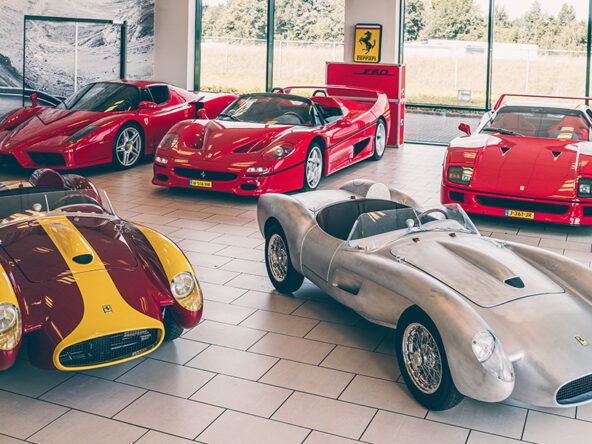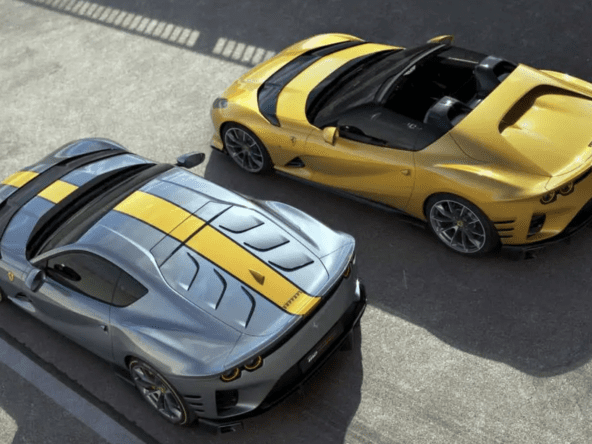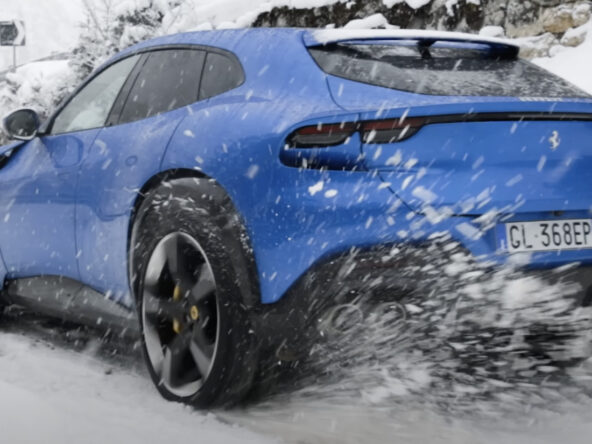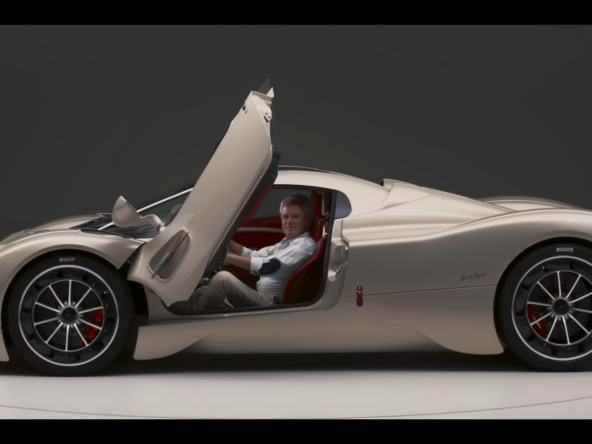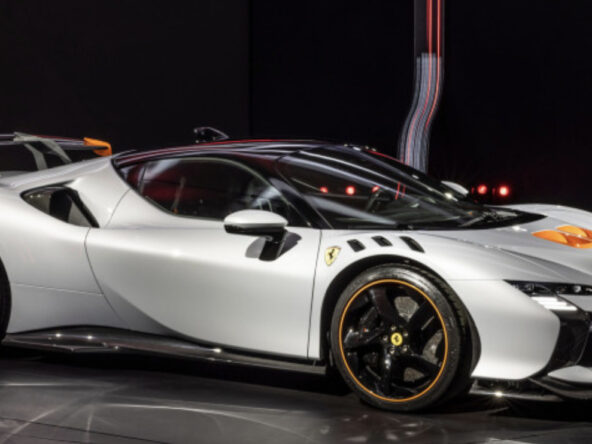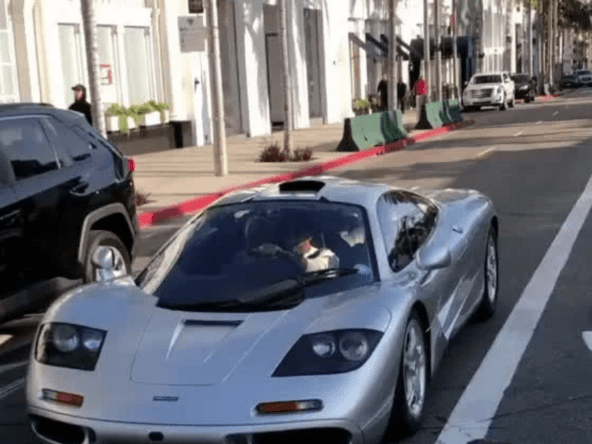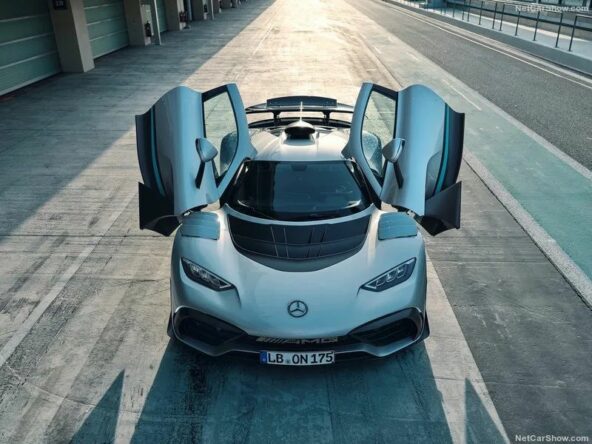McLaren M6 GT 1968-71 for sale
Overview
- 1968
Description
McLaren M6 GT 1968-71 for sale
The M6GT was a road going development of the McLaren M6 Can-Am car. Only 4 units of the M6 GT were ever produced – two painted red, another in yellow, and the last finished in the iconic McLaren Orange.
Bruce McLaren, who was always more than a driver, was ready to test his skill as an innovator, designer and entrepreneur. His intention was to build the fastest, highest quality and fastest accelerating road car in the world. Performance and manoeuvrability would be essential, but safety would also be central to Bruce’s design.
The car, a prototype M6GT registered as OBH 500H, was light, low, with a deafening sound and incredibly fast. Bruce used it to go to work and attend races. Its Bartz-adapted Chevrolet engine guaranteed brilliant performance, with an estimated top speed of 265 km / h and acceleration from 0 to 160 km / h in just 8 seconds. The prototype also featured some unconventional features, such as retractable headlights that were raised and lowered manually thanks to a hole in the front of the canister. Sadly, the project to build 250 units died with Bruce, and the OBH 500H is just a testament to his vision. Yet 25 years later, Bruce’s supercar dream came true with Gordon Murray thanks to the mighty McLaren F1.
The engine was a 5.7 litre Ford unit producing around 370bhp and the chassis was clothed in an attractive coupé body made of reinforced polyester resin. The M6 GT’s dry weight of 725 kilos testifies that it really was a racing car for the road, rather than a civilised supercar.
Bruce’s underlying idea was to make a road car that could be easily modified to compete in the 1969 Group 4 sports car category – a car to compete with Ferrari, Porsche and Alfa Romeo – as well as to offer the fastest, quickest accelerating and best handling road car on the market. Bruce’s prototype was good for over 165mph with a 0-100mph acceleration time of eight seconds.
When the FIA changed the homologation rules to require a minimum of 50 units to qualify for the race series it became too much of a commercial challenge for the young company, and Bruce’s tragic death at Goodwood in June 1970 effectively terminated the project. Trojan (McLaren’s partner for production of customer race cars) however, did build three M6GTs for customers. It would be almost 20 years before the McLaren company would dream of producing another road car….but it would be worth the wait.
Only one was built at the McLaren racing factory OBH 500H
The other 3 M6GTs were built by Trojan-Lambretta, the company that had the contract to build McLaren customer cars.
One of these was bought by David Prophet who raced it extensively.
After Bruce’s death, Denny Hulme bought his M6GT and shipped it back to New Zealand for display at the Museum of Transportation and Technology. Hulme was finally persuaded to sell the car in 1990 and it went to a businessman in San Francisco. Some time after this, the M6GT was acquired by the Mathews Collection.
Price:
Year: 1968
HP: 370
KMH: McLaren M6 GT 1968-71 for sale
The M6GT was a road going development of the McLaren M6 Can-Am car. Only 4 units of the M6 GT were ever produced – two painted red, another in yellow, and the last finished in the iconic McLaren Orange.
Bruce McLaren, who was always more than a driver, was ready to test his skill as an innovator, designer and entrepreneur. His intention was to build the fastest, highest quality and fastest accelerating road car in the world. Performance and manoeuvrability would be essential, but safety would also be central to Bruce’s design.
The car, a prototype M6GT registered as OBH 500H, was light, low, with a deafening sound and incredibly fast. Bruce used it to go to work and attend races. Its Bartz-adapted Chevrolet engine guaranteed brilliant performance, with an estimated top speed of 265 km / h and acceleration from 0 to 160 km / h in just 8 seconds. The prototype also featured some unconventional features, such as retractable headlights that were raised and lowered manually thanks to a hole in the front of the canister. Sadly, the project to build 250 units died with Bruce, and the OBH 500H is just a testament to his vision. Yet 25 years later, Bruce’s supercar dream came true with Gordon Murray thanks to the mighty McLaren F1.
The engine was a 5.7 litre Ford unit producing around 370bhp and the chassis was clothed in an attractive coupé body made of reinforced polyester resin. The M6 GT’s dry weight of 725 kilos testifies that it really was a racing car for the road, rather than a civilised supercar.
Bruce’s underlying idea was to make a road car that could be easily modified to compete in the 1969 Group 4 sports car category – a car to compete with Ferrari, Porsche and Alfa Romeo – as well as to offer the fastest, quickest accelerating and best handling road car on the market. Bruce’s prototype was good for over 165mph with a 0-100mph acceleration time of eight seconds.
When the FIA changed the homologation rules to require a minimum of 50 units to qualify for the race series it became too much of a commercial challenge for the young company, and Bruce’s tragic death at Goodwood in June 1970 effectively terminated the project. Trojan (McLaren’s partner for production of customer race cars) however, did build three M6GTs for customers. It would be almost 20 years before the McLaren company would dream of producing another road car….but it would be worth the wait.
Only one was built at the McLaren racing factory OBH 500H
The other 3 M6GTs were built by Trojan-Lambretta, the company that had the contract to build McLaren customer cars.
One of these was bought by David Prophet who raced it extensively.
After Bruce’s death, Denny Hulme bought his M6GT and shipped it back to New Zealand for display at the Museum of Transportation and Technology. Hulme was finally persuaded to sell the car in 1990 and it went to a businessman in San Francisco. Some time after this, the M6GT was acquired by the Mathews Collection.
Details
Updated on September 25, 2020 at 12:00 am- Year Built: 1968

















